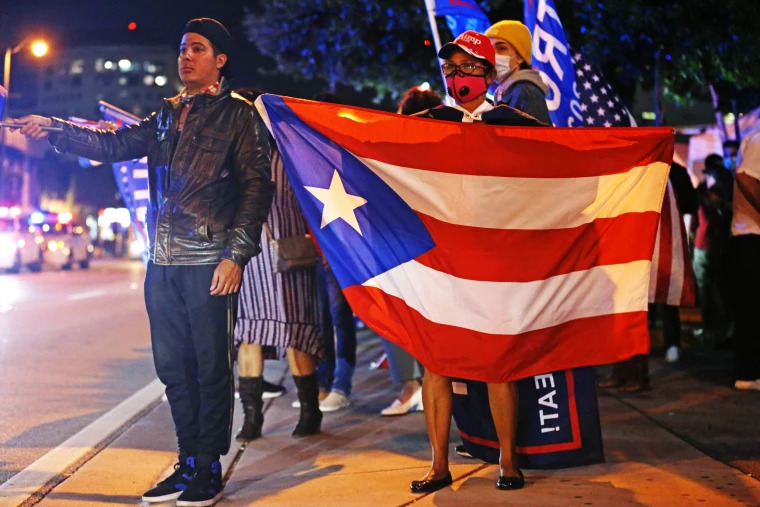
Since the 1990s, when large-scale Hispanic immigration began to gain recognition as a growing political group in America, the Republican/Grand Old Party (GOP) have been labelled as on a steep decline. To describe this phenomenon, political scientists invented the term: “immigration problem.” Based on trends at the time, they predicted that as more Hispanic immigrants came to America, the number of votes in elections would be squarely in favour of the Democrats. Hundreds of articles, papers, and books were written on this supposed “problem” that would shape the future of American politics. However, the estimates were wrong.
Political scientists got so caught up in the numbers that they forgot one key thing: history. When we cross-reference historical immigrant voting demographics, we see a recurring pattern that warns Democrats of a bleak future. If Hispanic, and more specifically, Mexican Americans, continue to vote the way they have, there is no “imigration problem.”
The first big Democrat voting bloc was German-American immigrants towards the end of the 19th century and the beginning of the 20th century. This wave of German immigrants were leaders in labour activism and socialist thought. Over time, German-American identity faded. The second and third generations mixed with other ethnicities and became more integrated into American society. They no longer considered themselves non-American or different. They identified increasingly as Americans and/or German-American. By the 1950s the German-American vote was 50/50. Today, German Americans vote overwhelmingly Republican.
Irish immigrants arrived around the same time as Germans immigrants as well and voted around 80 percent Democrat . Now, the Irish vote went through the same process and is about 60 percent in favour of Republicans. Italian immigrants are the same. Italian American voters were a staple of Democrat Franklin Delano Roosevelt’s gubernatorial runs in New York, but now the vote is evenly split. This pattern is a repeating phenomenon throughout American history. Given what happened to all three of these communities and others, this pattern simply cannot be ignored.
However, a notable variable to control for in this historical research is skin colour. Race could significantly affect this phenomenon and/or cancel it out. But, the evidence points to the contrary. If you break down Hispanic immigration by ethnicity, (Cuban, Colombian, etc.) then the same pattern has already occurred in some non-white ethnic groups. Non-Mexican immigrant groups of colour, from places like Colombia, are following similar patterns to the immigrants before them. For example, Colombians were a strong Democrat voting bloc in the 70s and 80s, but now vote majority Republican. For whatever reason, it is an important fact that immigrant groups tend to become more politically diverse over time.
Recent immigration waves have been dominated by people from Mexico and Central America. These groups were touted as the hope for future Democratic Party dominance, throughout the 2000s. But if we look at recent voting history, Central Americans are following the established historical pattern of previous immigrants. They voted overwhelmingly Democrat in the late 1990s and early 2000s, but have slowly decreased their support. Mexican-American support for the Democrat Party was around 85-90 percent in 1978, but now hovers at a measly 75 percent. This is not to mention that Mexican-American immigrants from older generations have already made the switch, voting majority Republican in 2020.
This piece is a warning. When looking at history, it is clear that the dream of party politics dominance by the Democrats is not coming anytime soon. Unfortunately for the Democratic Party, the “immigration problem” is now widely disproven as a myth. Instead the script has flipped. The latino vote, and the Mexican-American vote in particular, has been an irreplaceable interest group for the Democrats to capitalise on. Without them, Democrats are forced to adjust their future voting bloc. Valuable electoral votes in Texas, Arizona, and Florida may slip out of reach in future elections.
There is nothing Democrats can do to stop this process. History is inevitable. Instead, Democrats will be forced to find new interest groups and demographics to appeal to. This will likely come in the form of working-class appeal and supporting labour unions. Their economic platform will likely become more interventionist and welfare-supportive. This way they can turn out urban, lower-class voters in important states like Michigan, Ohio, and Pennsylvania. African-Americans will also become even more involved in the party-apparatus. Expect more African-American candidates, activism, and appeal. If the Mexican-American vote share does decrease, losing any African American voters will prove electorally fatal.
According to the pattern, the Mexican-American vote is not in danger of flipping just yet. Another decade of solid Democrat support is expected. Even so, if Democrats do not begin to think of new electoral strategies soon, 2036 and 2040 may be too late.



